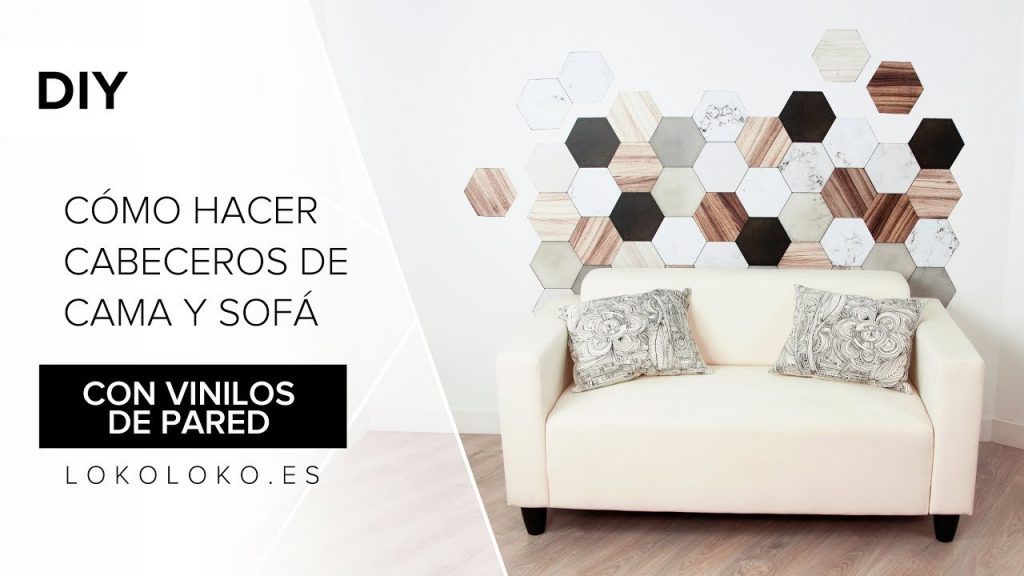Mural del cabecero
¿Necesita un cabecero? Hoy en día, muchos cabeceros tienen un papel más decorativo que funcional. Los cabeceros pueden ser caros y ocupar un espacio valioso, por lo que es mejor prescindir de ellos. Antes de comprar un cabecero, asegúrese de que es compatible con su cama de plataforma o con el armazón del somier.
Inicialmente, los cabeceros se utilizaban como barrera entre el borde de la cama y la pared. Así se evitaba que la cabeza de una persona se enfriara demasiado por la noche, ya que las paredes se enfriaban mucho sin aislamiento.
Gracias a la mejora del aislamiento y la calefacción, los cabeceros de cama han pasado a tener un papel más decorativo. No hay ningún propósito funcional que requiera que una cama tenga un cabecero, pero sí hay usos, como evitar que las almohadas se caigan al suelo.
Aunque un cabecero puede mejorar la estética de tu dormitorio, si decides no tenerlo tendrás otras opciones de diseño. Puedes poner una obra de arte en la cabecera de la cama, pintar la pared o simplemente dejar la pared lisa. Si piensa utilizar una obra de arte como cabecera, asegúrese de que las almohadas estén lo suficientemente alejadas del arte para evitar lesiones en caso de caída.
¿Por qué es importante y necesario un cabecero? Un cabecero da soporte a su cama, pero lo más importante es que protege su pared contra la abrasión. Además de los usos prácticos de un cabecero, un cabecero también puede dar a su dormitorio un toque muy personal. Siga leyendo y descubra más ventajas de utilizar un cabecero.
Es una buena razón para lavar con frecuencia la ropa de cama. Sudar durante la noche es totalmente natural, y el sudor y la humedad empaparán su almohada y ésta tocará la pared. Por lo tanto, si tiene tendencia a acostarse con la cabeza cerca de la pared, es más probable que la manche. Proteger la pared con un cabecero puede hacer que la pared quede bien limpia.
Si le gusta sentarse en la cama para leer o tal vez utilizar su tableta o su ordenador portátil, un cabecero proporciona un apoyo adicional. En lugar de sentarse contra una pared dura, un cabecero le proporcionará comodidad, por lo que será más agradable sentarse en la cama. Un cabecero también es ideal si le gusta desayunar en la cama.
In a previous post we have presented the Cátedra Ecuador along with a summary of all the research and development work on two Ecuadorian products, plantain (musa paradisiaca) and physalis (physalis peruviana l.). On this occasion we are going to present only one of the products which is the physalis or uvilla as it is colloquially called in its country of origin, Ecuador.
The genus «physaloides» includes 90 to 100 species (D`Arcy, 1991; Martinez, 1998) and one of the edible ones today is physalis peruviana, also known as guchuba, uchuva, uvilla, cape gooseberry or andean cherry.
We have been inspired by a Japanese technique and custom of lactic fermentation of fruit such as the well-known «umeboshi». The word «ume» or Japanese apricot is actually a plum (prunnus mume, armeniaca mume) with the literal translation being «dried plum». The «umeboshi» is traditionally used to make «umeshu» liquor macerated with «umeboshis».
In the case of umeboshi, it is a Japanese apricot that is grown in early summer when it is beginning to change its color from green to yellowish and is preserved through lactic fermentation in salt for a few months. They are then dehydrated in the sun and kept semi-dry. They are usually red because they are fermented with red shiso leaves, but they also exist without shiso. The most common way to eat them in Japan is in a cup of bacha tea, desalted in tempura or the most significant on top of a bowl with rice (hinomau bento, referring to the Japanese flag). (Hosking, R., 2001)
Vinilo para cabecero de cama del momento
In a previous post we have presented the Ecuador Chair together with a summary of all the research and development work on two Ecuadorian products, plantain (musa paradisiaca) and physalis (physalis peruviana l.). On this occasion we are going to present only one of the products which is the physalis or uvilla as it is colloquially called in its country of origin, Ecuador.
The genus «physaloides» includes 90 to 100 species (D`Arcy, 1991; Martinez, 1998) and one of the edible ones today is physalis peruviana, also known as guchuba, uchuva, uvilla, cape gooseberry or andean cherry.
We have been inspired by a Japanese technique and custom of lactic fermentation of fruit such as the well-known «umeboshi». The word «ume» or Japanese apricot is actually a plum (prunnus mume, armeniaca mume) with the literal translation being «dried plum». The «umeboshi» is traditionally used to make «umeshu» liquor macerated with «umeboshis».
In the case of umeboshi, it is a Japanese apricot that is grown in early summer when it is beginning to change its color from green to yellowish and is preserved through lactic fermentation in salt for a few months. They are then dehydrated in the sun and kept semi-dry. They are usually red because they are fermented with red shiso leaves, but they also exist without shiso. The most common way to eat them in Japan is in a cup of bacha tea, desalted in tempura or the most significant on top of a bowl with rice (hinomau bento, referring to the Japanese flag). (Hosking, R., 2001)

